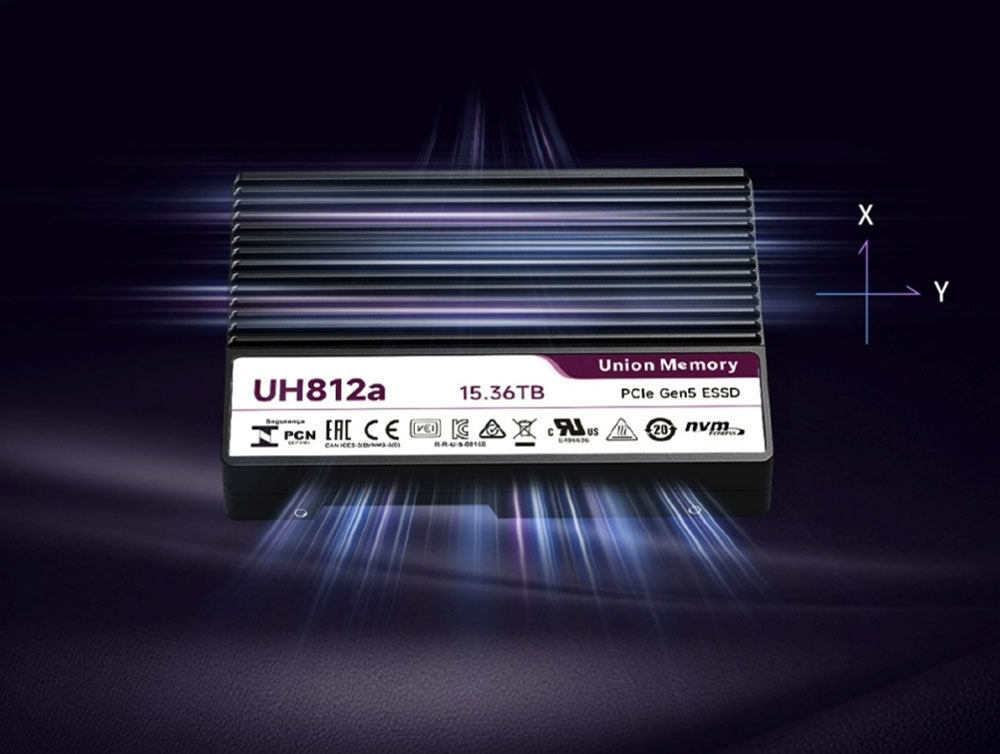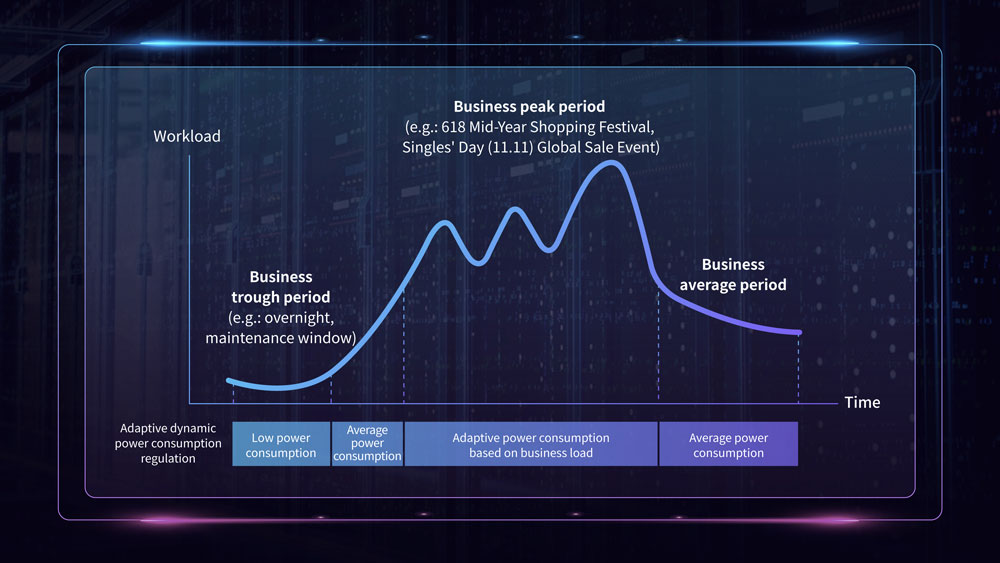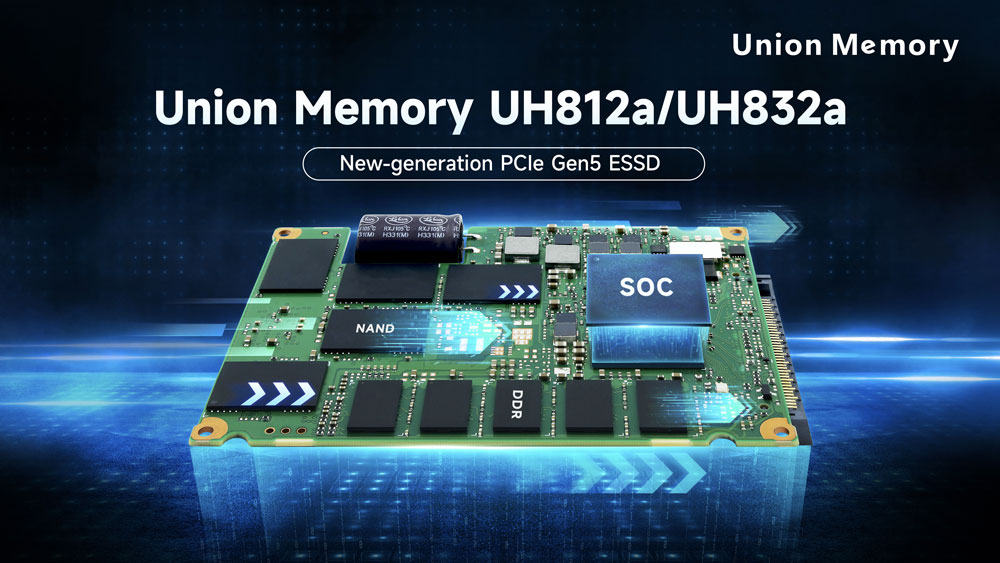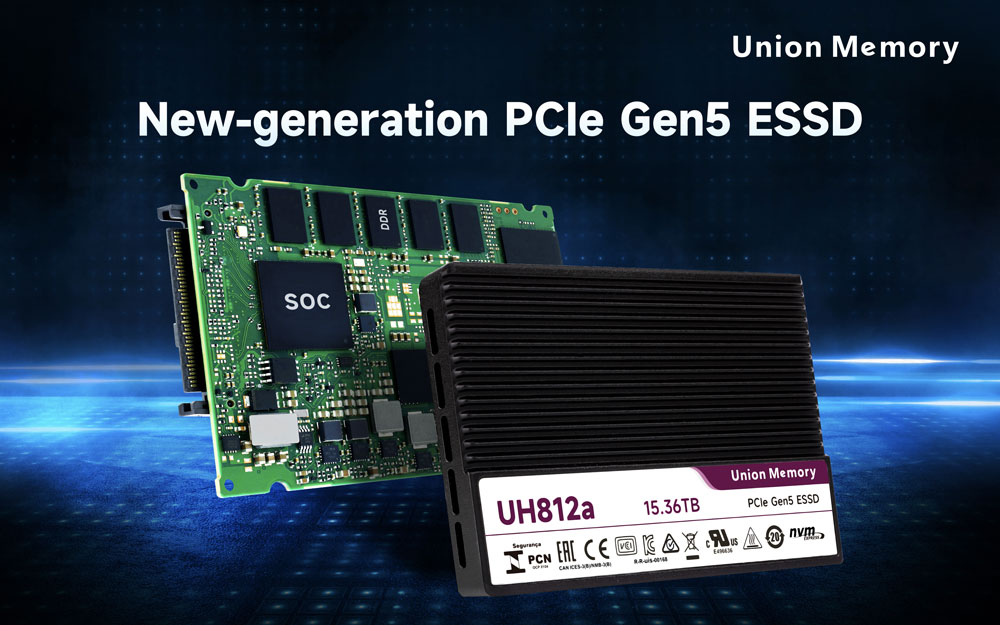
Date: May 30, 2025 Read: 470
Share:




In the high-density computing scenarios within data centers, ESSD power management is a key entry point for optimizing total cost of ownership (TCO). By adopting ESSDs with high energy efficiency design, advanced heat dissipation solution and intelligent management, we can effectively reduce power and operation costs. This helps data centers achieve sustainable cost reduction and efficiency improvement by reducing energy consumption and equipment maintenance.
Data centers can achieve lower power consumption and better TCO by adopting Union Memory's next-gen PCIe Gen5 ESSD UH812a/UH832a, the “cutting-edge technology” for power management.
Union Memory UH812a/UH832a optimizes SSD heat dissipation efficiency through hardware design and intelligent algorithm collaboration, balancing high performance and low energy consumption, and reducing non-IT equipment power consumption in data centers. Optimized DRAM cache technology and reduced write amplification can significantly reduce heat generation of SSD in high load conditions. The fin design inside the shell enhances overall cooling capability.
The flip-over design improves ASIC heat dissipation capability, supports standard rack server design, and operates with Y-axis exhaust cooling and X-axis airflow condition.

Actual test verification: UH812a/UH832a IOPS/Watt random read performance is 72% higher than international competitors, and its random write performance is 74% higher than international competitors. Disk smart temperature is 3℃ lower than domestic competitors and 12℃ lower than international competitors. ASIC temperature is 8℃ lower than domestic competitors and 25℃ lower than international competitors.
UH812a/UH832a is equipped with multiple power consumption modes with dynamic regulation functions. It automatically optimizes controller frequency and internal resources according to different business loads. Supporting flexible switching across various business scenarios, it reduces power consumption through refined power management, and achieves disk-level energy efficiency. Low and medium pressure and small business I/O correspond to lower power consumption, while peak power consumption corresponds to a high energy efficiency ratio. The SSD dynamically adjust power consumption according to the I/O workload sizes, meeting the random read / write requirements of data centers in various scenarios from medium-low to peak load (large e-commerce events such as “618” and “Double Eleven”).

Actual test verification: Random read peak power consumption of UH812a/UH832a ≤ 17W, random write peak power consumption ≤ 22W
With conventional BMC speed control strategies focusing solely on temperature, UH812a/UH832a introduces an innovative SSD power consumption detection function to enable the server BMC to detect both temperature and power consumption simultaneously. UH812a/UH832a is added with power consumption detection circuit and dedicated resistor inside the SSD. During server operation, the voltage passing through the detection resistor creates a small voltage drop. By collecting, calculating and amplifying the data, SSD power consumption can be accurately determined, allowing users to directly search the real-time SSD power consumption through the server BMC.

Actual test verification: The real-time power consumption detection error of UH812a/UH832a is within 3%.
UH812a/UH832a achieves intelligent power reduction and ultra‑low standby power consumption through deep collaboration between controller and firmware algorithm. When the SSD temperature exceeds the threshold, it automatically switches to the low power consumption mode to prevent performance degradation caused by overheating shutdown, CPU task scheduling, and resource occupancy. Meanwhile, it reduces CPU power consumption during data read/write, effectively lowering the overall server power consumption.

Actual test verification: The sequential read peak power consumption of UH812a/UH832a is within 16W, its sequential write peak power consumption is within 21W, and the disk’s idle power consumption is below 5W.
Note: All test data were obtained under equivalent performance and environment conditions.